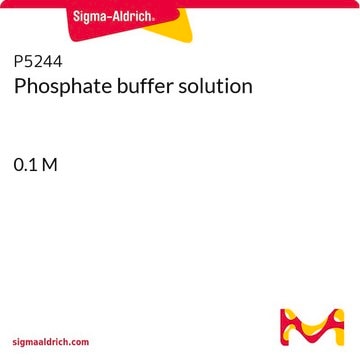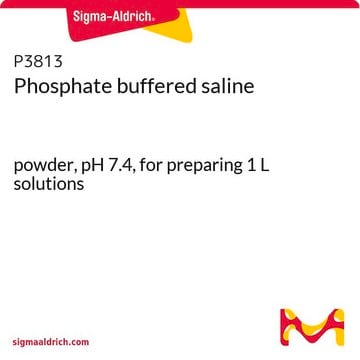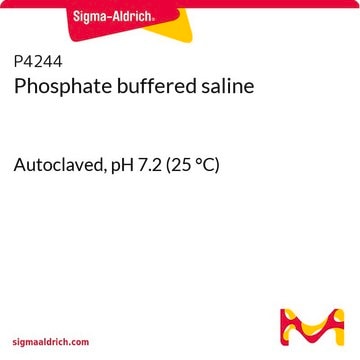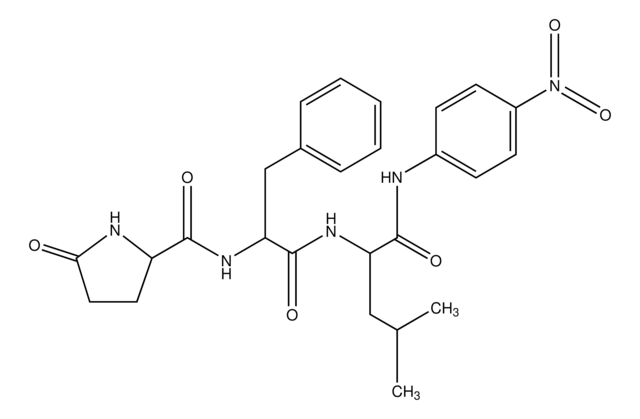P3619
Phosphate Buffer Solution
1.0 M, pH 7.4 (25 °C)
Iniciar sesiónpara Ver la Fijación de precios por contrato y de la organización
About This Item
Código UNSPSC:
12161700
eCl@ss:
32129211
NACRES:
NA.25
Productos recomendados
Formulario
liquid
Nivel de calidad
concentración
1.0 M
pH
7.4 (25 °C)
aplicaciones
diagnostic assay manufacturing
temp. de almacenamiento
2-8°C
Categorías relacionadas
Aplicación
Phosphate Buffer Solution has been used:
- to study sperm motility in different culture media
- for protein extraction
- as a reagent in blocking buffer for immunolabeling
Producto relacionado
Referencia del producto
Descripción
Precios
Código de clase de almacenamiento
12 - Non Combustible Liquids
Clase de riesgo para el agua (WGK)
WGK 1
Punto de inflamabilidad (°F)
Not applicable
Punto de inflamabilidad (°C)
Not applicable
Equipo de protección personal
Eyeshields, Gloves, multi-purpose combination respirator cartridge (US)
Elija entre una de las versiones más recientes:
¿Ya tiene este producto?
Encuentre la documentación para los productos que ha comprado recientemente en la Biblioteca de documentos.
Los clientes también vieron
Characterization and cryopreservation of Amur leopard cats (Prionailurus bengalensis euptilurus) semen collected by urethral catheterization
Jeong DH, et al.
Theriogenology, 119, 91-95 (2018)
Immunogold Electron Microscopy of the Autophagosome Marker LC3
Mattoscio D, et al.
PLoS Pathogens (2017)
Dong-Hyuk Jeong et al.
Theriogenology, 119, 91-95 (2018-07-10)
The Amur leopard cat (Prionailurus bengalensis euptilurus) is a globally endangered species, and there is thus an urgent need to increase its population. The objectives of this study were to: (1) confirm the utility of urethral catheterization (UC) for semen
Laura Tedesco et al.
Diabetes, 59(11), 2826-2836 (2010-08-27)
Cannabinoid type 1 (CB1) receptor is involved in whole-body and cellular energy metabolism. We asked whether CB1 receptor stimulation was able to decrease mitochondrial biogenesis in different metabolically active tissues of obese high-fat diet (HFD)-fed mice. The effects of selective
G Lê-Bury et al.
Biology of the cell, 112(3), 92-101 (2020-01-11)
Non-typhoidal Salmonella (NTS) causes a severe invasive syndrome (iNTS disease) described in HIV-positive adults. The impact of HIV-1 on Salmonella pathogenesis and the molecular basis for the differences between these bacteria and classical diarrhoeal S. Typhimurium remains unclear. Here, we
Nuestro equipo de científicos tiene experiencia en todas las áreas de investigación: Ciencias de la vida, Ciencia de los materiales, Síntesis química, Cromatografía, Analítica y muchas otras.
Póngase en contacto con el Servicio técnico









